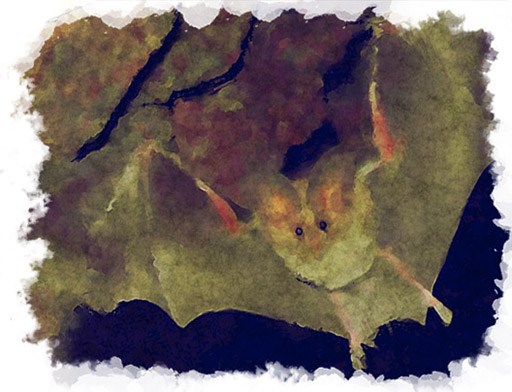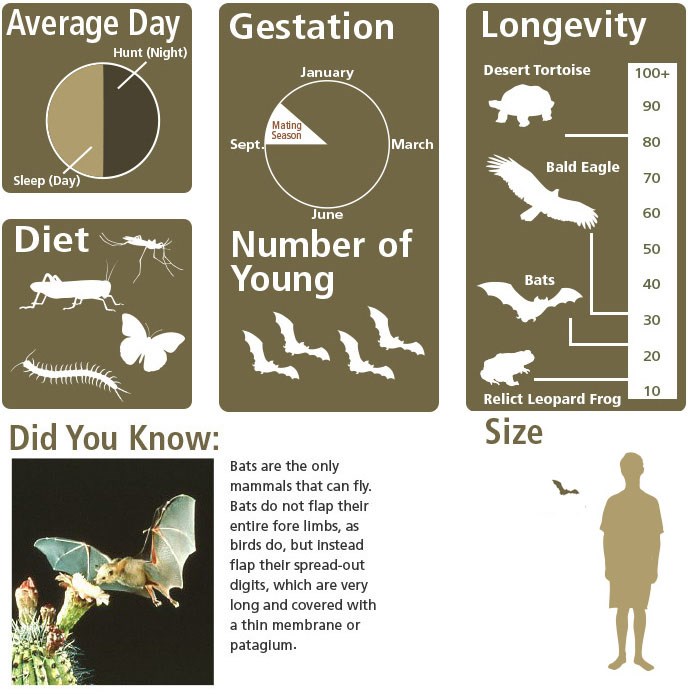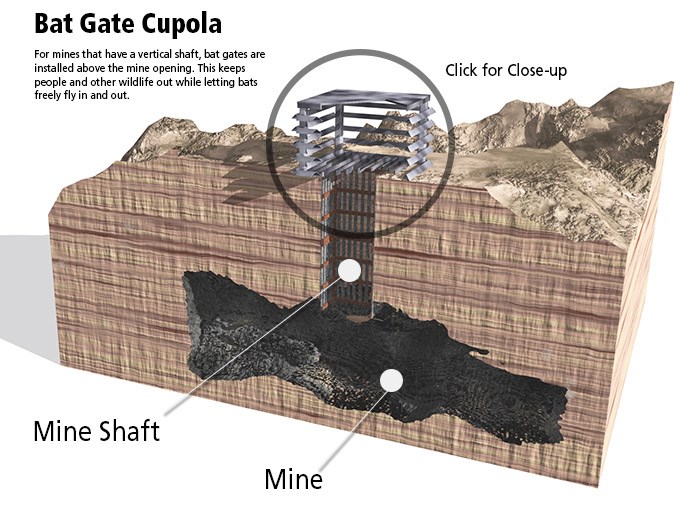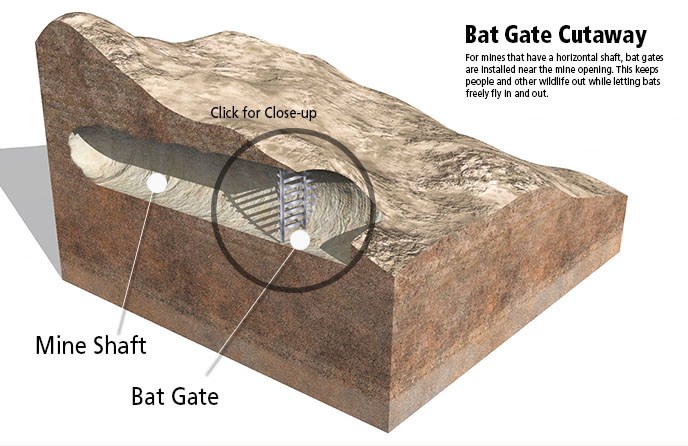
Fast Facts
Status and Threats
None of the bat species found at Lake Mead NRA are federally listed as threatened or endangered. However, ten species are listed as species of concern. Current local threats include water developments, which may reduce spring flows and limit habitat, and disturbance of hibernating colonies by recreational activities. Emerging threats include proposed wind developments and White-Nose Syndrome (WNS). Wind farms are known to cause high rates of mortality among certain bat species, and the three species experiencing the highest rates of mortality are found at Lake Mead. WNS is a fungal infection first seen in New York in 2006 that is progressing west. WNS often kills up to 90 percent of colonies, and at least two species of bat found in the park are known to be susceptible. Since bats bear only one pup each year, there is potential for the disease to have devastating impacts.

Protecting the Bat's Environment

ReferencesBat Conservation International Bats of the United States. Southwest Regional Gap Analysis Project U.S. Fish and Wildlife Service Endandered Species Program U.S. Fish and Wildlife Service: Information on White-Nose Syndrome U.S. Geological Survey: Information on Effects of Windmills on Bats Western Bat Working Group Threat Level provided by the International Union for Conservation of Nature's (IUCN) Red List. http://www.iucnredlist.org/ | ||
|
|
Last updated: September 2, 2020
